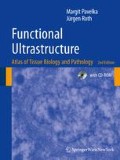Abstract
Apoptosis is a physiologic type of programmed cell death that is essential for normal development and regular life of tissues and organs. It is used by multicellular organisms for elimination of “unwanted” cells, which may include excess and unnecessary cells, defective, senescent and harmful cells. Any apoptosis disorder potentially leads to diseases. By contrast to necrosis, which is a nonphysiologic accidental cell death resulting from irreversible cell injury, apoptosis takes place according a genetic cell-suicide programme and is an active process initiated by extern signals or by intrinsic events, such as DNA-damage or irreparable stress at cellular organelles. Both pathways that initiate and regulate apoptosis, the death receptor pathway and the mitochondrial pathway,lead to the activation of particular proteases called caspases (cysteine aspartic acid-specific proteases). A cascade of caspase-mediated cleavage processes takes place causing dramatic cellular changes, which give rise to the characteristic morphological apoptosis patterns.
Access this chapter
Tax calculation will be finalised at checkout
Purchases are for personal use only
References
Abraham MC and Shaham S (2004) Death without caspases, caspases without death. Trends Cell Biol 14: 184
Bursch W, Ellinger A, Gerner Ch, and Schulte-Hermann R (2003) Caspase-independent and autophagic cell death. In: When cells die (Lockshin R, Zakeri Z, and Tilly JL, eds). New York Chichester Weinheim Brisbane Singapore Tokyo: Wiley-Liss
Cohen I, Castedo M, and Kroemer G (2002) Tantalizing Thanatos: unexpected links in death pathways. Trends Cell Biol 12: 293
Cuervo AM (2004) Autophagy: in sickness and in health. Trends Cell Biol 14: 70
Machamer CE (2003) Golgi disassembly in apoptosis: cause or effect? Trends Cell Biol 13: 279
Penninger JM and Kroemer G (2003) Mitochondria, AIF and caspases — rivalling for cell death execution. Nat Cell Biol 5: 97
Taatjes DJ, Sobel BE, and Budd RC (2008) Morphological and cytochemical determination of cell death by apoptosis. Histochem Cell Biol 129: 33
Zhang J and Xu M (2002) Apoptotic DNA fragmentation and tissue homeostasis. Trends Cell Biol 12: 84
Author information
Authors and Affiliations
Rights and permissions
Copyright information
© 2010 Springer-Verlag/Wien
About this chapter
Cite this chapter
Pavelka, M., Roth, J. (2010). Apoptosis. In: Functional Ultrastructure. Springer, Vienna. https://doi.org/10.1007/978-3-211-99390-3_12
Download citation
DOI: https://doi.org/10.1007/978-3-211-99390-3_12
Publisher Name: Springer, Vienna
Print ISBN: 978-3-211-99389-7
Online ISBN: 978-3-211-99390-3
eBook Packages: Biomedical and Life SciencesBiomedical and Life Sciences (R0)

